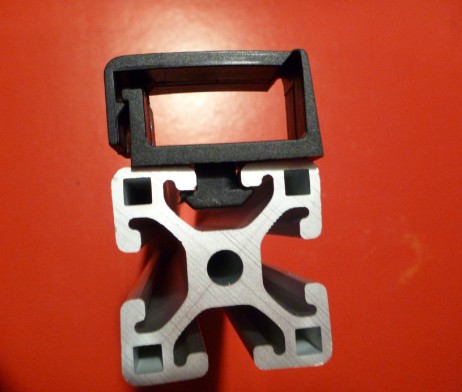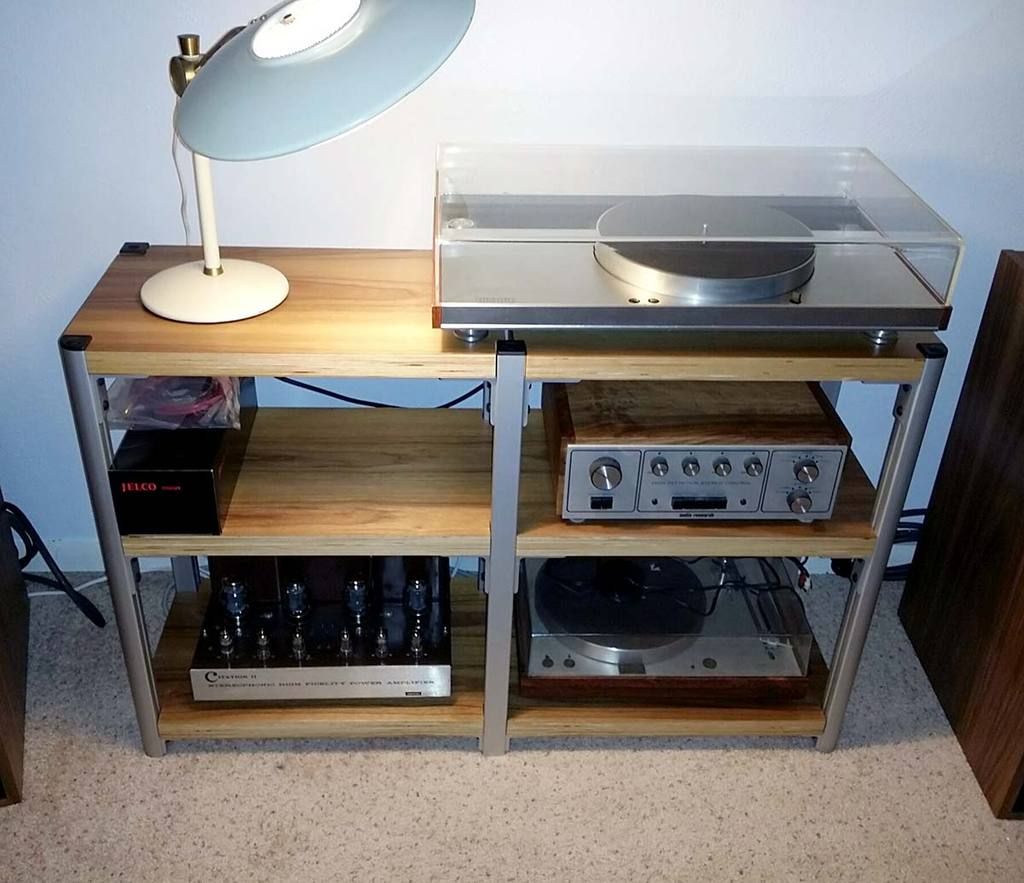Other projects (around the house, work, in the garden, painting, etc.) have taken time out of my busy audio DIY schedule, so sorry for the delay.
The veneering method I use is both practical and easy. It's practical from the standpoint of not requiring a vacuum bag, or long open-time adhesives; and easy from the perspective of application - it uses an iron. It is important to make sure, if you decide to use this method, that you use *ONLY* paper-backed veneer only - now raw flitches! I don't recommend anyone ever use the 'iron on' veneer adhesive that is available - I tried that stuff once and it is utter crap. I had to completely rebuild a ruined speaker box. My process uses regular old Titebond original yellow wood glue (I bought a gallon, and have done multiple large projects).
I cut the veneer down to slightly oversized - about an inch total in both directions - that gives me some wiggle room for positioning. Then you just apply a nice, even, fairly thick coat of glue to the paper backer side of the veneer, and also to the face of the plywood blank. Then you just let both pieces dry until there is no indication of any wet glue - the color will be uniform - any areas of wet glue under the surface will appear to be lighter in color. Once the glue is dry, position the veneer on the panel where you want it, cover the surface with a cotton sheet or rag (cotton won't melt at high temps), set your iron to it's highest setting, and starting in the middle of the panel and working along the grain in one direction, apply pressure and slowly move along the panel. Go back to the middle, and go along the veneer grain in the opposite direction. Continue outward until the entire panel has been covered. At this point, I go over everything a second time with as much pressure on the iron as possible. I go fairly slowly - each piece of veneer is covered by the iron for maybe 8-10 seconds or so. I also do this on the floor, that way I can get the mass of my upper body bearing down on the iron so that good contact is made between the two surfaces as the glue reactivates. I then do an additional pass around the edges. You cannot reposition the veneer once it has been ironed in one place, so be sure it's positioned correctly before you apply any heat! If you try, your panel will be ruined!
Once the ironing is done, I use an exacto with a *NEW* blade to very carefully trim the veneer down to just a few hairs from the edge of the panel all the way around. I then use my table belt sander to sand the veneer flush to the finished edge of the panel. I did this before I had a belt sander with a sanding block and some 120 grit sandpaper. Works just as well, just takes a bit longer. I then check for air bubbles under the veneer. You can do this by gently rubbing your fingers over the surface of the newly-veneered panel and listening for changes in the tone of the noise produced. If you hit a 'hollow' spot and the tone changes, you know you have a void, and that spot needs re-ironing. If you re-iron and the spot still lifts, I use a large stainless steel serving spoon to burninsh the spot down. Heat up the spot with your iron for 5 seconds or so, then without removing the cotton cloth and using the spoon, apply pressure and rub the spoon over the area in question sever times in a back and forth manner. This usually does the trick! For stubborn areas along the edges, you can use a bit of veneer to squish some glue under any voids, then heat it up with the iron to adhere them down.
This method works great! I've done a rather large set of DIY Altec speakers this way, and they came out nice. You want to make sure of a couple of things though. The glue only has about a day or two of reactivation time - after that, the glue will not melt and re-set. I do my veneering *AS SOON AS THE GLUE IS COMPLETELY SET* - this way I maximize the flexibility and reactivation potential of the adhesive. I usually end up with one or two small areas that need to be re-melted - but I use a lot of pressure and go over the surface twice and the edges a third time.
For a finish, I sand the veneer lightly with a sanding block or a random orbital sander (depending on the wood thickness of the veneer) first with 220, then by hand with 400. DON'T GET CARRIED AWAY with the sandpaper. You can very easily sand right through the wood and then your project is ruined. I really like minwax spar urathane. It's a nice fast-drying oil based urathane with superior water-resistance. I have used it on four audio projects now, and an *very* happy with the results. I usually do four thin coats with a light sanding to 400 grit between the third and final coat. I'm still waiting for the final coat of urathane to dry on the last two shelves, but here is where this project is right now.
Will post up some more photos when it's all back together!









